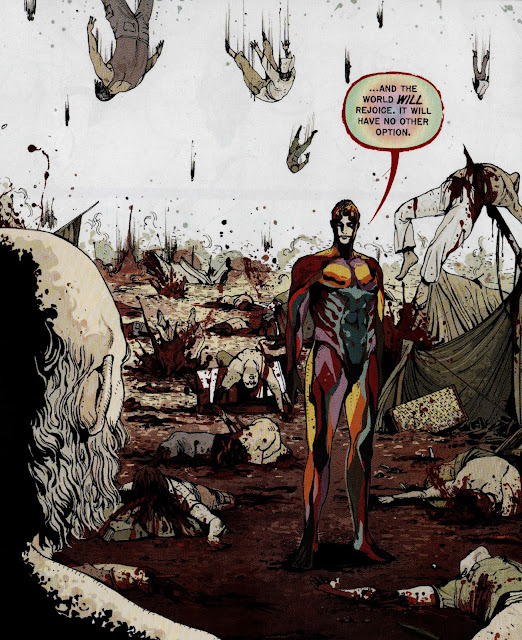My name is Edward Prendick, and I survived the wrecking of the Lady Vain and the subsequent aimless drift on the Pacific Ocean from which I was saved by a small boat in the act of transporting animals to a small island.
It is on this island that I survived for the next 11 months, surrounded on all sides by horrors that were I to tell you about them, you would think me insane and have me committed to an asylum.
Which means that, if you are reading this, I must be dead, and the truth will finally out.
In this account, so long forced into the quiet by the restraints of what is commonly accepted, I will tell of man and beast, and of the dividing line between them erased.
Erased by a mad doctor, a man more monstrous than the monsters he created. Of nature undone and turned on its head. I will tell you of this man and the terrors of his island, The Island of Doctor Moreau.
The Island of Doctor Moreau is a novel that's had a lot of impact over the years, influencing everyone from China Mieville to Margeret Atwood, it's an undeniable staple of the science fiction genre.
It's not very good though; a novel focusing on themes and viewpoints rather than the telling of a good story. That's not to say it's bad but I'm just finding that nothing much of it is sticking with me. It's going to be memorable, but because of its elements rather than because of the whole. I had previously read Wells' War of the Worlds and the Time Machine so his style was familiar, though (obviously) dated. The first-person narrative is occasionally surprisingly open and honest, which is unusual in this type of novel, where emotions are usually cleaned up or neutered into detached observations.
There's an ever present oppressive atmosphere and several memorable scenes, in particular a chase scene through the dark in the earlier scenes on the island. There were also some genuinely laugh out loud moments, for the most part because Wells introduced a funny phrase here and there, quite out of the blue. p85:
Then suddenly it (a pathway) turned parallel with the edge of a steep walled gap which came without warning like the haha of an English park - turned with unexpected abruptness. I was still running with all my might and I never saw this drop until I was flying headlong through the air.
It's not an especially funny novel though, no, on the bloody contrary;
Here's a picture of the Broadview version of the novel (which I don't have). Don't worry, it's warranted to share this, and I'm not here to shock.
If you don't have a dog, you'll likely think this picture constitutes cruelty to animals, but anyone with a dog will know that sometimes, those loveable little critters are gonna gobble up something they shouldn't and then those jaws just gotta open. It's not pretty but mostly quite harmless.
However, the black and white effect of this photograph immediately adds a sinister layer to it, and it's honestly quite apt for the novel. Because yeah, there's a ton of animals getting hurt, physically, and mentally brutalized within its pages. It's not always on display, but it's there as a pervasive background hum, undeniable, the second we arrive on the island. And then after, it's quite frequently present as literal screaming, commented on by our narrator, and its wrongness is increased fundamentally when we finally understand that beasts are being tortured into men. It's horrifying in its implications, especially in what it doesn't say or show, because just as our narrator is only privy to what comes after, we never see the transformations in progress. We don't see the anesthetized cutting and slicing, the rearranging of bone and tendon, the removal of skin. As such the novel never goes full-on gratuitous, but it's there. It's violent and pretty horrific for its time, and it's there for a reason.
There's a scene, the biggest part of chapter 14 that's undeniably the best part of the novel. It is the novel's heart, you can say, filled with dialogue, mostly by Moreau but now and then with an interjection by our narrator. Here is where Moreau lifts the curtain and reveals his story and tells Prendick of the work he has been doing. It's where the novel's themes are put on open display. The Island of Doctor Moreau was written during the time when vivisectionism on animals was still being heavily contested and propagated by two distinct movements. Doctor Moreau and Prendick inhabit these opposing points of view. There's a lingering focus on the merits of vivisectionism in the dominant voice of Moreau here, in this chapter, because that one's passion makes him magnetic whenever he has the word. But outside of the chapter the darkness of the rest of the novel effectively overshadows this point of view, maybe to serve as a parable for taking this too far, a warning.
It's a chapter almost devoid of wells' sometimes turgid description and it's quite gripping stuff.
For the rest, the novel reads fast, primarily because of its low page count.
Yes indeed; a quick read so that I could check it off the ever-growing TBR-shelves.




















































